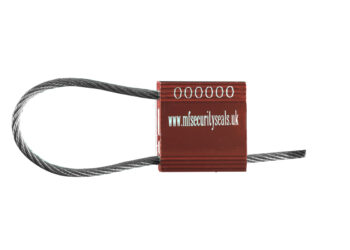In an increasingly interconnected world, securing global supply chains and safeguarding cargo during transportation has become a paramount concern for governments, industries, and businesses alike. One critical component in this endeavor is the utilization of security seals, designed to prevent tampering, theft, and unauthorized access to containers, trucks, and other modes of transport. However, the rise of counterfeiting and illicit activities threatens the effectiveness of these security measures, prompting the need for robust authentication systems. ISO 17712 certification emerges as a vital tool in preventing counterfeiting of security seals by setting stringent standards and procedures for their design, manufacturing, and verification.
Understanding ISO 17712 Certification:
ISO 17712 is an internationally recognized standard developed by the International Organization for Standardization (ISO) to address the vulnerability of security seals to counterfeiting. This standard outlines the requirements for high-security seals used in containerized cargo transportation. Its primary aim is to ensure the integrity and authenticity of security seals, thereby enhancing the security of goods in transit and reducing the risks associated with tampering, theft, and terrorism.
Key Components of ISO 17712 Certification:
- Design Specifications: ISO 17712 specifies design requirements that make it exceedingly difficult to duplicate security seals. This includes features such as unique markings, serial numbers, and barcodes, making it challenging for counterfeiters to reproduce genuine seals accurately.
- Tamper Evidence: The standard mandates that certified security seals must exhibit clear evidence of tampering. This feature ensures that any unauthorized attempts to breach the seal are immediately noticeable, thereby deterring tampering and alerting stakeholders to potential security breaches.
- Strength and Durability: Certified seals are subjected to rigorous testing to ensure they can withstand various environmental conditions, mechanical stress, and tampering attempts. These tests ensure that the seals maintain their integrity throughout the transportation process.
- Traceability: ISO 17712-certified seals must be traceable back to the manufacturer and supplier. This traceability feature aids in maintaining accountability and allows authorities to identify the origin of seals in case of a security breach.
- Third-Party Validation: The certification process involves third-party testing and validation by accredited organizations. This independent verification adds a layer of authenticity to the certified security seals, assuring users of their effectiveness and compliance with international standards.
Preventing Counterfeiting:
ISO 17712 certification serves as a robust deterrent against counterfeiting for several reasons:
- Stringent Requirements: The certification imposes stringent requirements on seal manufacturers, making it challenging for counterfeiters to replicate the unique design, markings, and tamper-evident features of genuine seals.
- Global Acceptance: As an internationally recognized standard, ISO 17712-certified seals enjoy widespread acceptance and adoption across various industries and countries. This makes it difficult for counterfeiters to infiltrate legitimate supply chains using fake seals.
- Verification Process: ISO 17712-compliant seals are subject to verification processes by stakeholders along the supply chain, including customs officials, logistics personnel, and security agencies. Any deviation from the standard’s specifications raises suspicion, leading to thorough investigation and the potential interception of compromised cargo.
- Legal Implications: The use of counterfeit security seals can have severe legal consequences. ISO 17712 certification provides a basis for legal actions against counterfeiters, adding a deterrent factor through potential penalties and prosecutions.
- Enhanced Security Culture: The reliance on ISO 17712-certified seals fosters a culture of security awareness and responsibility within the supply chain community. Stakeholders are more likely to take security measures seriously when using genuine, certified seals, reducing the overall vulnerability to tampering and theft.
Conclusion:
ISO 17712 certification plays a crucial role in preventing the counterfeiting of security seals by establishing rigorous standards that discourage replication and manipulation. Through design specifications, tamper evidence, strength testing, traceability, and third-party validation, this certification ensures the authenticity and effectiveness of security seals. By creating a strong deterrent against counterfeiting, ISO 17712 contributes to the overall security of global supply chains, safeguarding goods and facilitating safe international trade.












